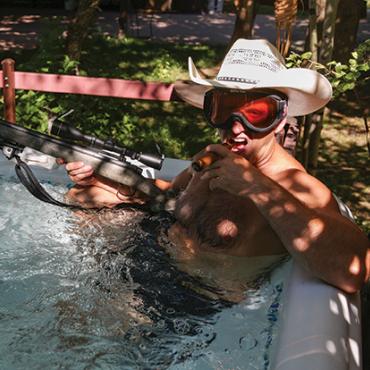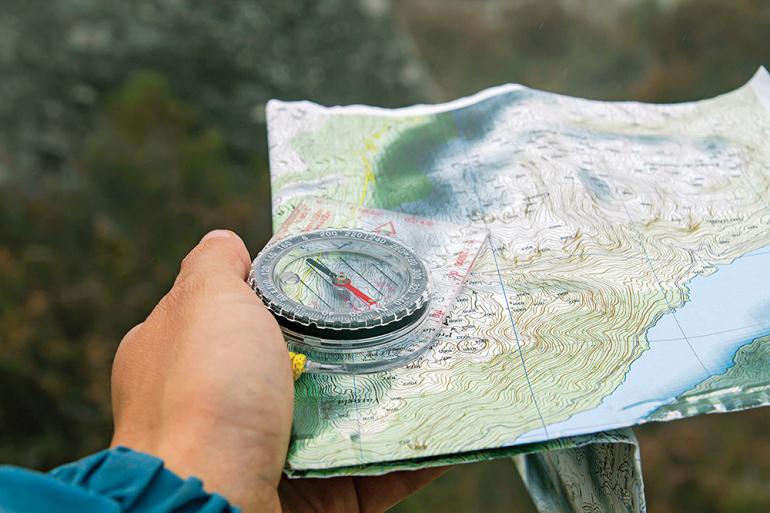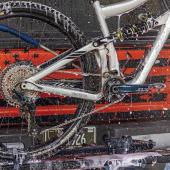Topo Tips
Advice for better orienteering.
Our admiration of the antique is not admiration of the old, but of the natural. —Ralph Waldo Emerson
If you’re like most people, you carry your phone into the woods, using software such as OnX to navigate. Or maybe you prefer a GPS. Either way, you rely on an electronic device to guide you through unfamiliar terrain, keep you oriented, and help prevent calamity.
I prefer a map and compass. Not because I’m a Luddite (which I may be), but because they’re more natural. They align with the wilderness and the spirit of the hunt way more than a high-tech gadget that sends electronic signals into space and back. Plus, using them requires mental effort, which keeps the brain sharp. Last but not least, they don’t die or lose service.
However, using a map and compass requires know-how. The fundamental skill is reading contour lines, which is a lesson all its own, and one that we won’t get into here. Rather, here are a few tips & tricks for better orienteering, should you succeed in wresting yourself from phone-fascination, electronic addiction, and lithium-ion dependency.
Orient the map. All topo maps are laid out with north at the top. When examining a map, use your compass to identify true north (make sure you’ve set its declination), then either turn yourself or turn the map so that the map’s north lines up with actual north. Otherwise, you’ll have to extrapolate the offset in your brain, which convolutes the process.
Identify terrain features. Navigating in mountainous country is way easier than in the flatlands. Identify hilltops, saddles, ridgelines, and drainages on the map, then match them up with what you see around you. The more features you can identify, the better your understanding of where you are.
Verify location. This is where the compass comes in. If the map shows a hilltop to the west, point your compass to ensure that it is, indeed, to the west of you. If you think you’re on a certain ridgeline, use the compass to identify which direction it runs, then check it against the map. It’s easy to miscalculate one’s precise location, but careful use of the compass will eliminate error.
As with any skill, practice is imperative—the more you orienteer, the better you’ll get. If you stick with it, eventually it’ll be second-nature. And then, when your hunting partner’s GPS dies five miles back, you can whip out your map and say, “No worries. We’re right here. This is that ridge over there, here’s that stream we just crossed, which means that the truck is right down there. Let’s go.” And it will all seem perfectly natural.













